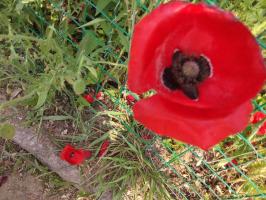Introduction
Cherry trees are known for their beautiful pink flowers in the spring and delicious fruit in the summer. While they can be grown and propagated through cuttings, more often they are planted from seeds. However, sometimes the leaves of cherry trees planted from seeds can turn white. In this article, we will explore the reasons behind this phenomenon.
Lack of Sunlight
One reason why cherry tree leaves planted from seeds may turn white is due to a lack of sunlight. Cherry trees require full sun in order to thrive, and if they receive too little sunlight, their leaves may turn pale or white. This can also happen if the tree is planted in an area with too much shade or if it is overcrowded by other trees.
Nutrient Deficiency
Another possible reason why cherry tree leaves planted from seeds may turn white is due to a nutrient deficiency. Cherry trees require specific nutrients to grow, such as nitrogen, phosphorus, and potassium. If the soil where the tree is planted is lacking in these nutrients, it can lead to the leaves turning pale or white. A soil test can be conducted to determine if this is the case.
Pest Infestation
A pest infestation can also cause cherry tree leaves planted from seeds to turn white. Aphids, spider mites, and scale insects are common pests that can feed on the leaves of the tree, causing damage and discoloration. If a pest infestation is suspected, it is important to take measures to control it before it spreads and causes further damage to the tree.
Disease
In some cases, cherry tree leaves planted from seeds may turn white due to a disease. One such disease is powdery mildew, which appears as a white powdery coating on the leaves, stems, and sometimes the fruit of the tree. This disease is caused by a fungal infection and can be treated with fungicides. Other diseases that can cause white or pale leaves include cherry leaf spot, cherry yellows, and fire blight.
Conclusion
There are several reasons why cherry tree leaves planted from seeds may turn white. While lack of sunlight, nutrient deficiency, pest infestations, and disease are all potential causes, it is important to properly diagnose the issue before taking any action. Consulting with a professional arborist or horticulturist can help determine the root cause and provide the appropriate treatment or preventative measures to ensure the health and vitality of the cherry tree.

 how many times do yo...
how many times do yo... how many planted tre...
how many planted tre... how many pine trees ...
how many pine trees ... how many pecan trees...
how many pecan trees... how many plants comp...
how many plants comp... how many plants can ...
how many plants can ... how many plants and ...
how many plants and ... how many pepper plan...
how many pepper plan...































